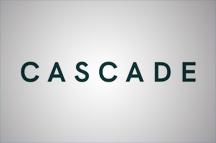The long-awaited Levelling Up White Paper has been published by the Department for Levelling Up, Housing and Communities (DLUHC). To save you the trouble of reading 300 plus pages we have leafed through this important document at lightening speed.
This is a signature piece of this Government’s agenda, and the delivery of which may decide the fate of the next General Election, the Secretary of State has announced 12 “missions” to save Britain’s “forgotten communities” - with a target that all 12 objectives will be achieved by 2030.
It was clear when the Prime Minister moved Michael Gove into the newly named DLUHC that he was serious about delivering on promises that were made during the 2019 General Election campaign to level up the rest of the country, to rejuvenate communities that had been left behind. Michael Gove is known as the fixer within Whitehall and his reforms in education, justice and agriculture have been wide reaching and will be long lasting.
The Secretary of State has said that this White Paper will “turbo charge every part of the UK” and “tackle to reverse inequality that is limiting so many horizons.” It’s certainly an ambitious plan and one that the Prime Minister and his Government are hedging their bets on being able to deliver.
Mission control
The 12 missions outlined :
- Pay, employment and productivity will rise in every area of the UK, with the gap between the most prosperous and other areas closing;
- Domestic public investment in research and development outside the Greater South East will increase by at least 40 percent;
- Local public transport connectivity across the country will be “significantly closer” to the standards of London;
- Provide improved broadband nationwide and 5G coverage for the majority of the population by 2030;
- The number of primary school children achieving the expected standard in reading, writing and maths will have “significantly increased” to 90 percent of children;
- The number of people successfully completing high-quality skills training will have “significantly increased” by 200,000 per year, with the establishment of 55 new Education Improvement;
- The gap in healthy life expectancy between local areas where it is highest and lowest will have narrowed. By 2035 life expectancy will rise by five years;
- “Well-being” will have improved in every area of the UK;
- “Pride in place,” such as people’s satisfaction with their town centre, will have risen in every area of the UK, utilising the £2.6bn Shared Prosperity Fund;
- The number of first-time buyers will increase in all areas, with renters having a “secure path” to home ownership. The number of non-decent rented homes will have halved, with a plan to bring all homes in the private rented sector in line with the Decent Homes Standard;
- Homicide, serious violence and neighbourhood crime will have fallen;
- Every part of England that wants one will have a devolution deal.
The devil is always in the detail
It’s important to note that many of these 12 missions are existing government policies, with funds already allocated to them, but the difference being that they will now be enshrined in law.
However, there were some noticeable announcements in relation to housing and development.
Under the White Paper’s plans, DLUHC will end the “80/20 rule” which sees 80% of government funding for housing supply being directed to “maximum affordability areas”, namely London and the South East.
Instead, DLUHC said the majority of its previously announced £1.8 billion brownfield fund would go to “transforming brownfield sites” in the North and Midlands. The Metro Mayors will receive £120 million of the brownfield funding. There’s also £100m to create three new housing innovation accelerators in the West Midlands, Glasgow and Greater Manchester.
Under a new £1.5 billion Levelling Up Home Building Fund, DLUHC said home ownership would be boosted. This fund will offer loans to SME builders and “support the UK Government’s wider regeneration agenda in areas that are a priority for levelling up”, with 20 new urban regeneration projects similar to King’s Cross across the country, starting with Sheffield and Wolverhampton. With the new dual headquarters for DLUHC in Wolverhampton, a new regeneration project is another vote of confidence for the city.
More affordable homes
There will also be a new Social Housing Regulation Bill to reflect a “further” commitment to building more “genuinely affordable” social housing. DLUHC said this would deliver upon the commitments made following the Grenfell tragedy. And the Government is set to unveil a plan to bring all homes in the private rented sector in line with the Decent Homes Standard. As part of the 12 missions, by 2030, DLUHC aims to increase the number of first-time buyers in all areas, with renters having a “secure path” to home ownership.
Make no mistake, this White Paper is an integral part of the Prime Minister’s agenda, and it will be interesting to see how much will be achieved from these 12 “missions” ahead of the next General Election, whenever that will be.
by Reece Pugh, Client Manager














